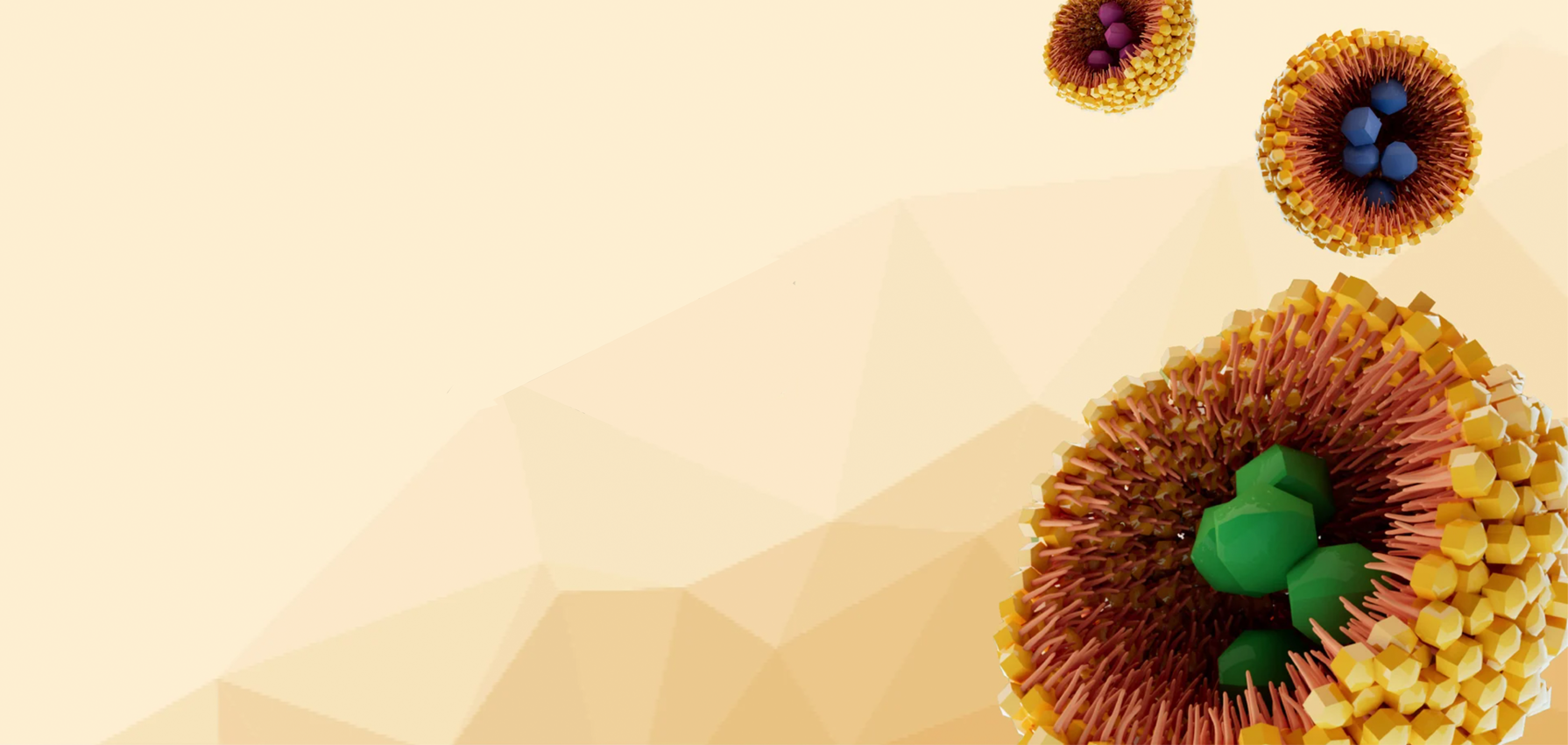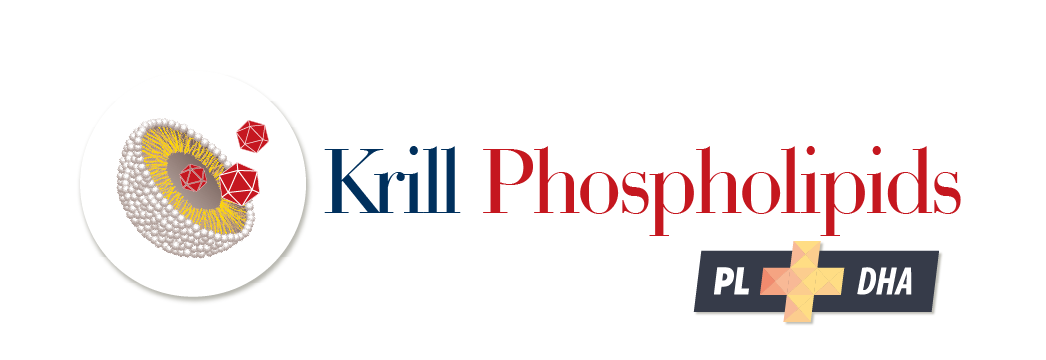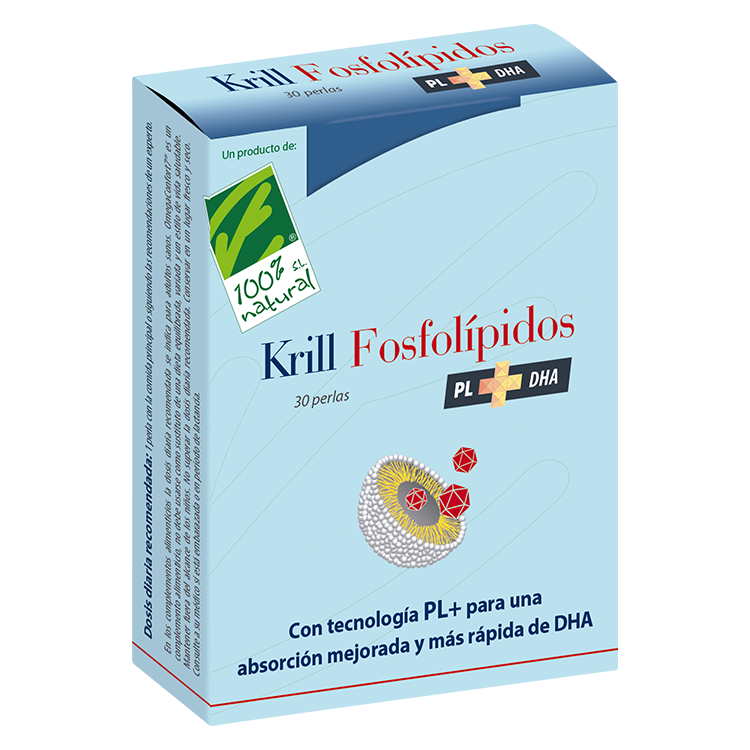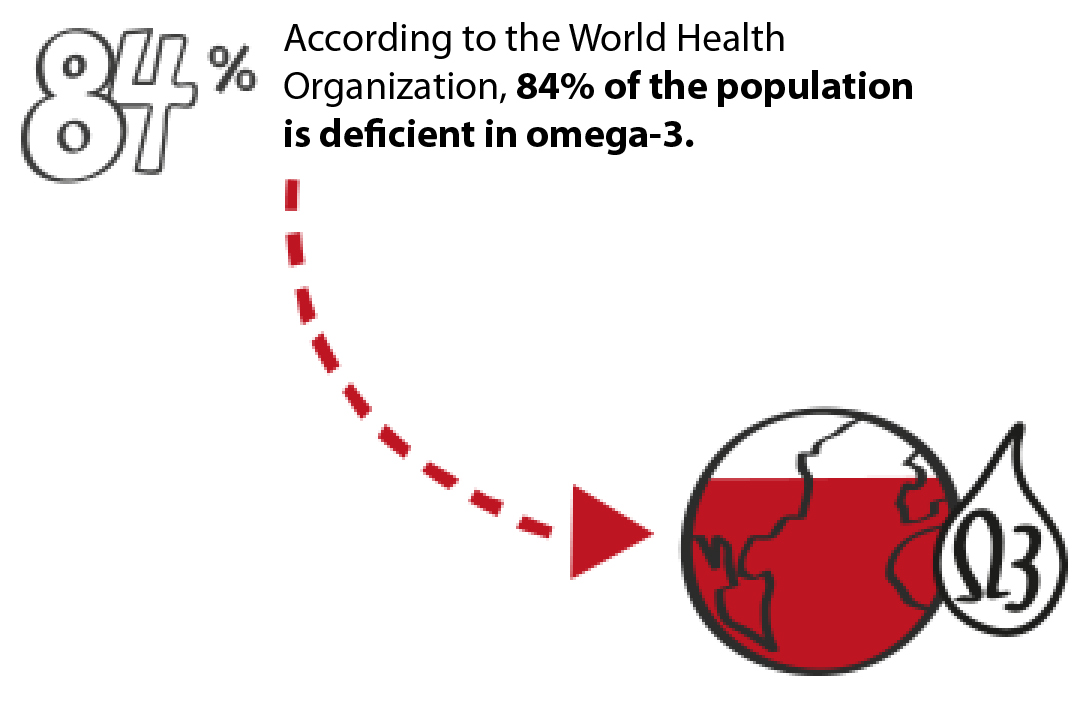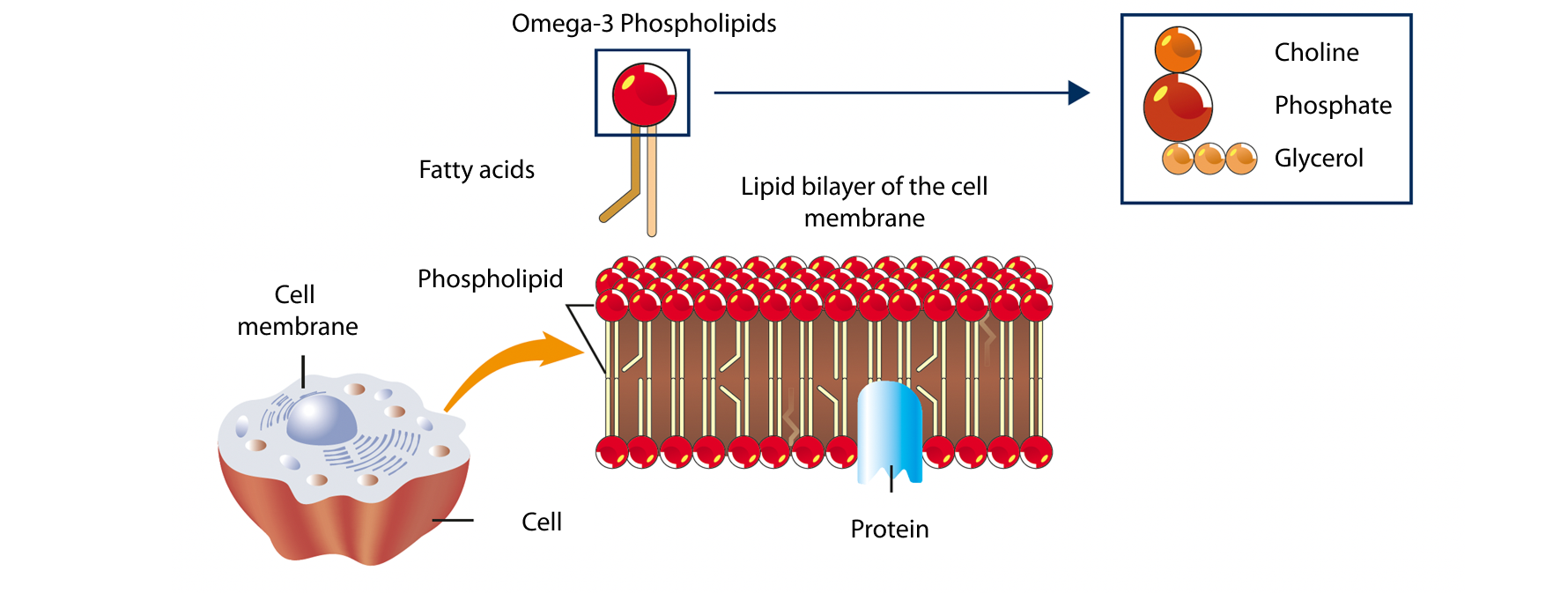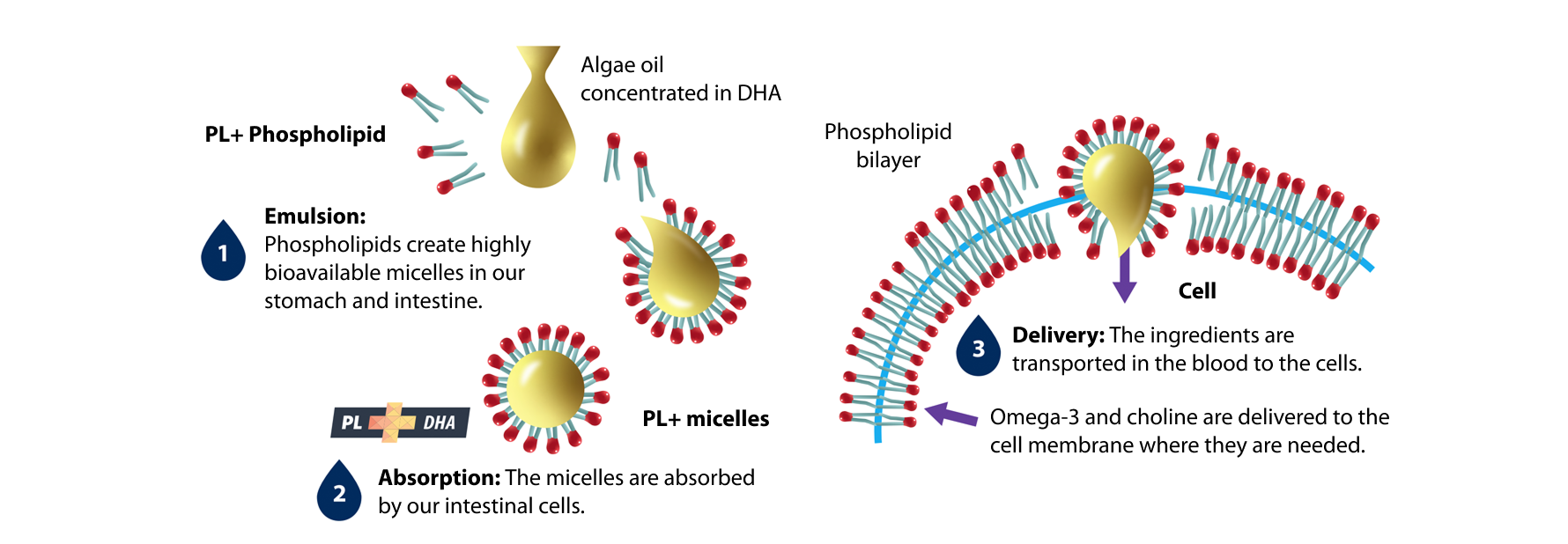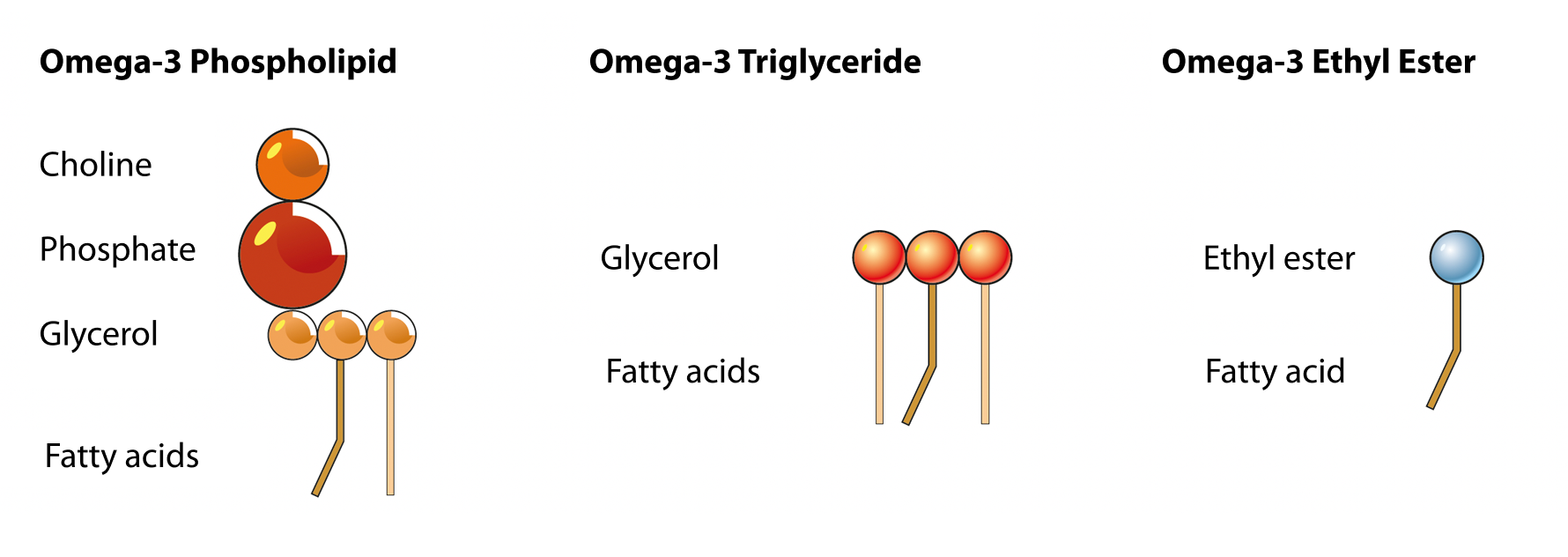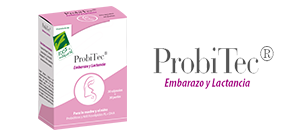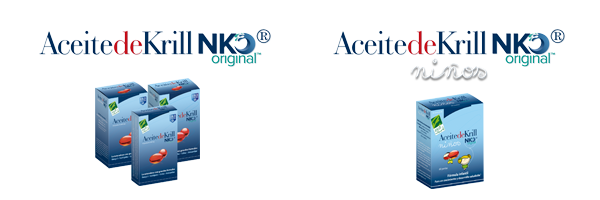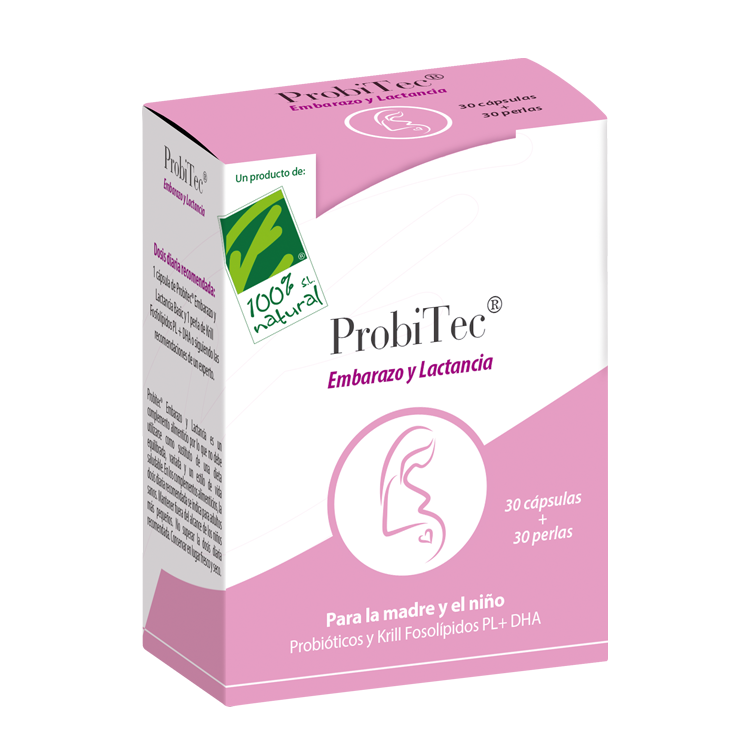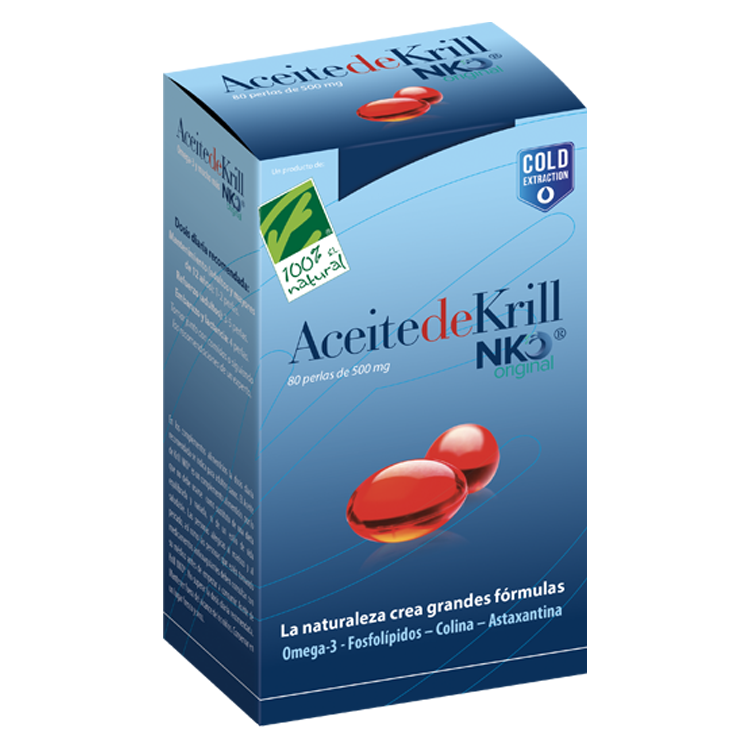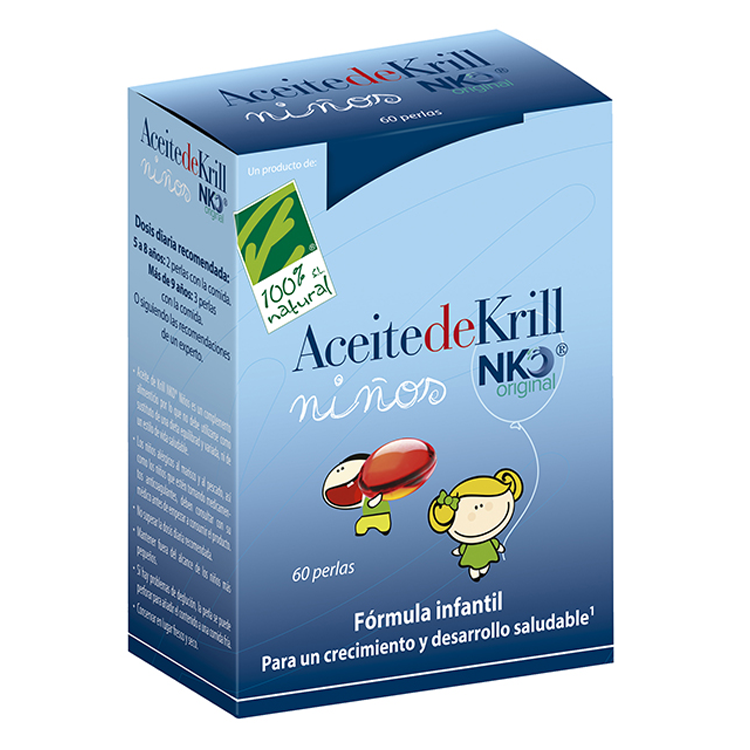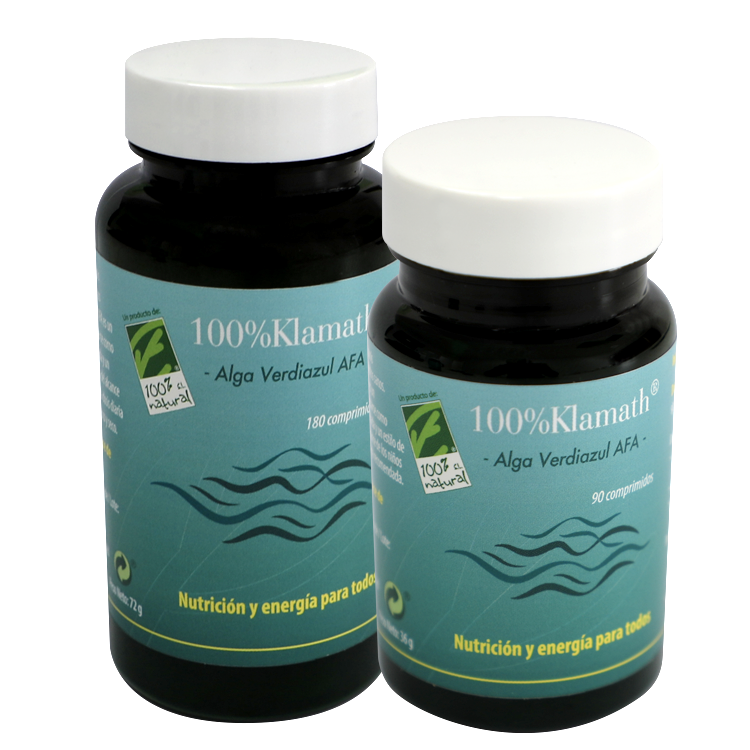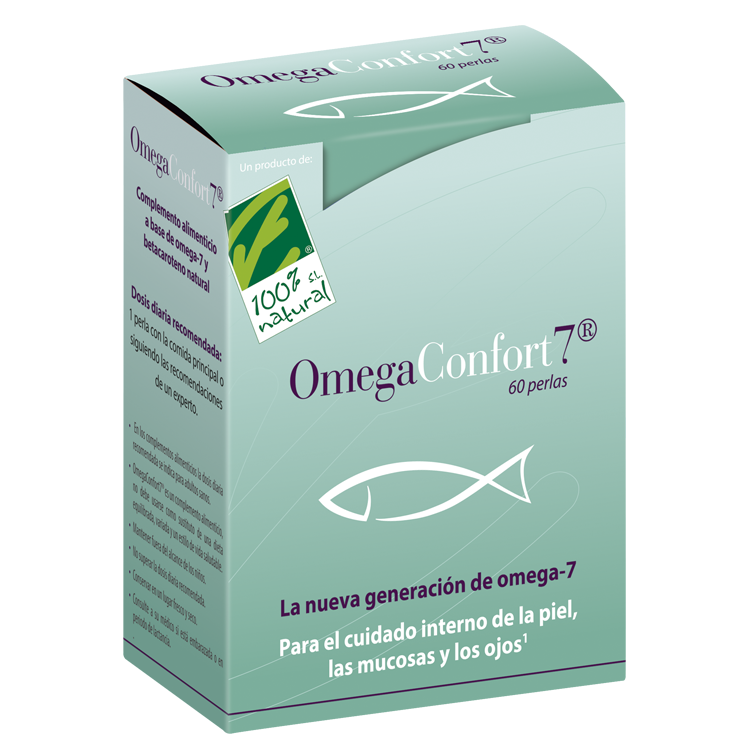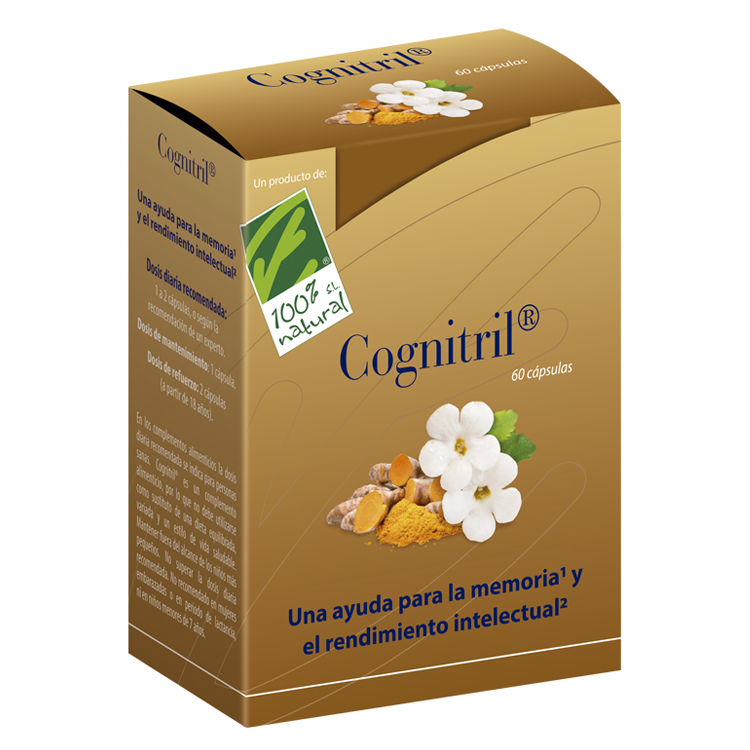What is Krill Phospholipids PL+DHA?
Krill Phospholipids PL+DHA contains a concentrated formula of DHA (docosahexaenoic acid), a long-chain fatty acid that belongs to the omega-3 family. PL+ technology is incorporated, in which the phospholipids in krill oil are used to obtain DHA (extracted from the microalgae Schizochytrium sp.) with 5 times greater absorption and bioavailability than other fish oil extracts or microalgae in the form of triglycerides.
A 200 mg capsule of Krill Phospholipids PL+DHA is equivalent to 1000 mg of DHA in the form of triglycerides.
The formula also contains Astaxanthin.
What is DHA?
Docosahexaenoic acid (DHA) is a long-chain omega-3 fatty acid and is a very important component of the human brain, cerebral cortex and retina. It is especially important in brain development during infancy and childhood, and its action on adult cognitive health, including memory, learning, concentration and mental acuity, as well as emotional well-being, is increasingly valued.
Do we need Omega-3 in our diet?
A July 2016 study published in Progress in Lipid Research demonstrated that there are significant deficiencies in the levels of long-chain omega-3 EPA (eicosapentanoic acid) and DHA (docosahexaenoic acid) among the majority of the worlds population.
Sources of long-chain omega-3 such as EPA and DHA are oily fish, shellfish (such as krill) and some seaweed (DHA only).
The consumption of NKO ® Krill Oil contributes to achieving a healthy level of omega-3.
Why are the phospholipids in krill oil so important for bioavailability?
Phospholipids are the main component of all our cell membranes, and the omega-3s contained in krill oil are in the exact form that the body needs for optimal cellular absorption: in the form of phospholipids.
A phospholipid molecule consists of two fatty acids, which are long chains of carbon and hydrogen molecules. They are attached to a glycerol backbone, which is also attached to a phosphate group. The phosphate group attached to glycerol does not qualify this structure as a phospholipid, so the phosphate group must be attached to an amino alcohol such as choline or serine. If it binds to choline, it gives rise to the phospholipid phosphatidylcholine. Choline, phosphate and glycerol constitute the hydrophilic side of the molecule and fatty acid chains are the hydrophobic part, as shown in the figure.
Phospholipids are amphipathic in nature, that is, they have hydrophilic parts and hydrophobic parts. This feature is important for the structural function of phospholipids, which serve as building blocks of cell membranes. When phospholipids are exposed to water, they are organized into micelles (small spheres), with their hydrophobic tails pointing toward the center of the sheet and the hydrophilic heads toward the surrounding water.
Phospholipids can help improve the bioavailability of compounds that are poorly soluble in water, by increasing their degree of dispersion and solubilization in the gastrointestinal tract and stimulating lymphatic transport.
What is PL+ technology?
PL+ technology is an excellent option for improving the absorption and bioavailability of highly lipophilic and poorly soluble molecules in water.
It consists of the use of phospholipids from Antarctic krill oil, specifically phosphatidylcholine, which mainly contains long-chain polyunsaturated fatty acids (PUFA), providing a flexible structure that can optimally “accommodate” different lipophilic components, forming micelles. In this way, the different lipophilic nutrients are easily incorporated into the tissues in a more effective and efficient way.
Phospholipids are the main component of all our cell membranes, and long-chain omega-3s (EPA and DHA) provide them with flexibility, optimizing their structure and function.
What is special about Krill Phospholipids PL+DHA?
With PL+ technology, a highly absorbable and bioavailable source of DHA is achieved, with great performance for our cells.
If we compare the absorption of marine oils (fish or microalgae), which come in the form of triglycerides or ethyl esters, with those in the form of phospholipids (as in krill oil), we see that they are incorporated into the body more efficiently.
- Compared to an ethyl ester oil, the absorption of omega-3 fatty acids with PL+ technology is improved up to 10 times.
- Compared to triglyceride oil, the absorption of omega-3 fatty acids with PL+ technology improves up to 5 times.
Differences with omega-3 in the form of triglycerides and ethyl esters
The differences in the chemical structure between an omega-3 bound to phospholipids, as in krill oil, and an omega-3 bound to triglycerides or in the form of an ethyl ester, as in fish or seaweed oils, will affect the absorption that we will have of these omega-3s in the body.
Other products with PL+ Technology
ProbiTec® Pregnancy and Lactation combines probiotics and omega-3, two interesting nutrients in pregnancy and breastfeeding.
Other products in the krill oil line
NKO® Krill Oil: The real krill oil. Rich in long-chain omega-3 essential fatty acids EPA and DHA, combined with phospholipids, improving the absorption and bioavailability of omega-3.
NKO® Childrens Krill Oil: infant formula developed for the healthy growth and development of little ones. With NKO® Krill Oil and Fish Oil (Solutex®) as sources of omega-3 fatty acids, astaxanthin and vitamin D3.
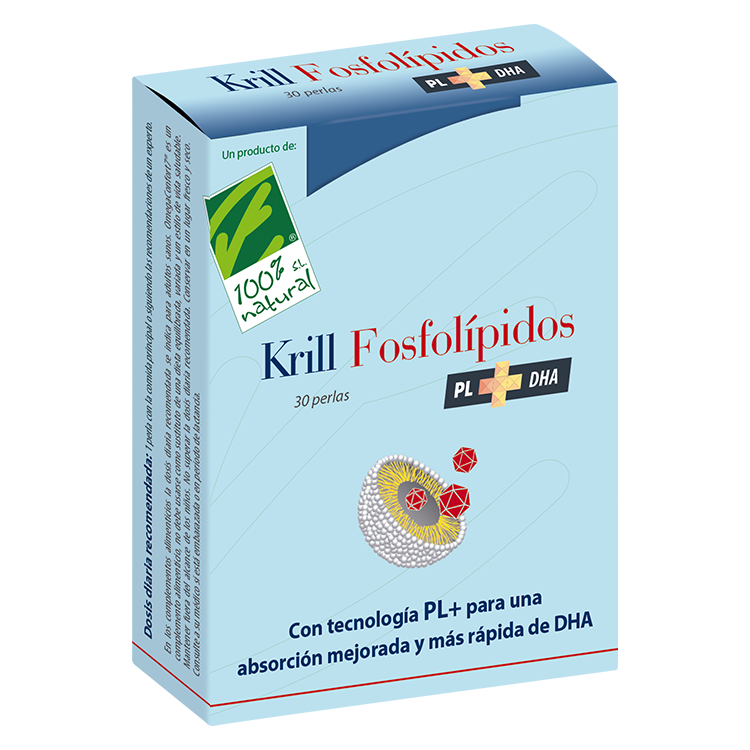
- 30 beads Krill Phospholipids PL+DHA C.N. 217697.3
- 90 beads Krill Phospholipids PL+DHA C.N. 217698.0
1 pearl of Krill Phospholipids PL+ DHA contains:
Antarctic Krill Oil Phospholipid Extract (PL+): Phospholipids Omega-3, of which: EPA DHA
|
370 mg 210.9 mg 103.6 mg 59.2 mg 25.9 mg
|
Microalgae oil (Omegatex ®), of which: DHA
|
220 mg 176 mg
|
Total DHA
|
201.9 mg
|
Astaxanthin (AstaReal®)
|
1 mg
|
Ingredients : Phospholipid extract from Antarctic krill (crustacean) oil Euphasia superba (PL+); gelatin pearl [fish gelatin, vegetable glycerin, sorbitol, vanilla and water]; Omegatex® microalgae oil (Schizochytrium sp.) and astaxanthin (AstaReal®).
Or following the recommendations of an expert
- In dietary supplements, the recommended daily dosage is indicated for healthy adults.
- Krill Phospholipids PL + DHA is a dietary supplement, so it should not be used as a substitute for a balanced, varied diet and a healthy lifestyle.
- Keep out of reach of younger children.
- Do not exceed the recommended daily dosage.
- People who are taking blood-thinning medications should consult their doctor before using this product.
- Store in a cool, dry place.
- Gluten-free, lactose-free and dairy protein-free: casein.
It contains crustacean and fish oil.
- PVPR Box of 30 Pearls: 24.95€
If you need to ask any questions about this or other products and ingredients, do not hesitate to contact us at 91 386 53 70.



